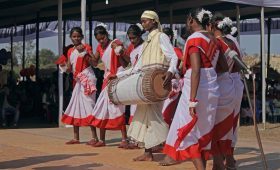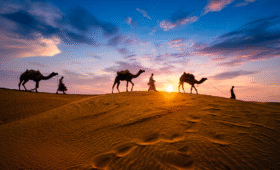Offbeat Places to visit in meghalaya
Meghalaya, which means “Abode of the Clouds,” is the most accessible of North East India’s Seven Sister States. Think fairy jungles, living root bridges, commanding landscapes with roaring high waterfalls, mountain drives through dramatic clouds, pristine villages, mysterious natural caverns, crystal clear rivers, bright blue natural pools, and the friendliest people you’ve ever met!
Meghalaya, surrounded by the Khasi, Jaintia, and Garo Hills, provides visitors a basic and untouched beauty. Natural wonders abound throughout the state, including cascading waterfalls, sparkling clear rivers, natural caves, and a vibrant cultural legacy. From the beautiful Cherrapunjee waterfalls to the clean waters of Umngot, Meghalaya is a region that is practically midway between heaven and earth.
A journey to Meghalaya can be both economical and convenient for your vacation schedule. The majority of the breathtaking sights are within 2 hours of each other (yay for good roads! ), and there’s something for everyone- from adventure activities like cliff jumping, caving, trekking, and rappelling to simply sitting in a village home/luxurious resort and listening to the sounds of nature.
Best time to visit Meghalaya
The climate of Meghalaya is tropical. The winter months, from October to March, are the greatest time to visit. However, if you want to experience the waterfalls in Meghalaya in their full grandeur, go between August and the beginning of October, which is the end of the rainy season.
Meghalaya is one of those places in India that is stunning in any season. While the monsoon is our favorite season to visit and show you around the place, the other seasons are as beautiful. What determines when you want to go on a Meghalaya trip is what you want to experience. For instance, if you want to see the beautiful waterfalls in full glory, monsoon is best but cliff jumping and swimming in the natural pools formed by the waterfalls are prohibited at that time and are doable post-monsoon season.
Basic offbeat places to visit in Meghalaya
SHILLONG
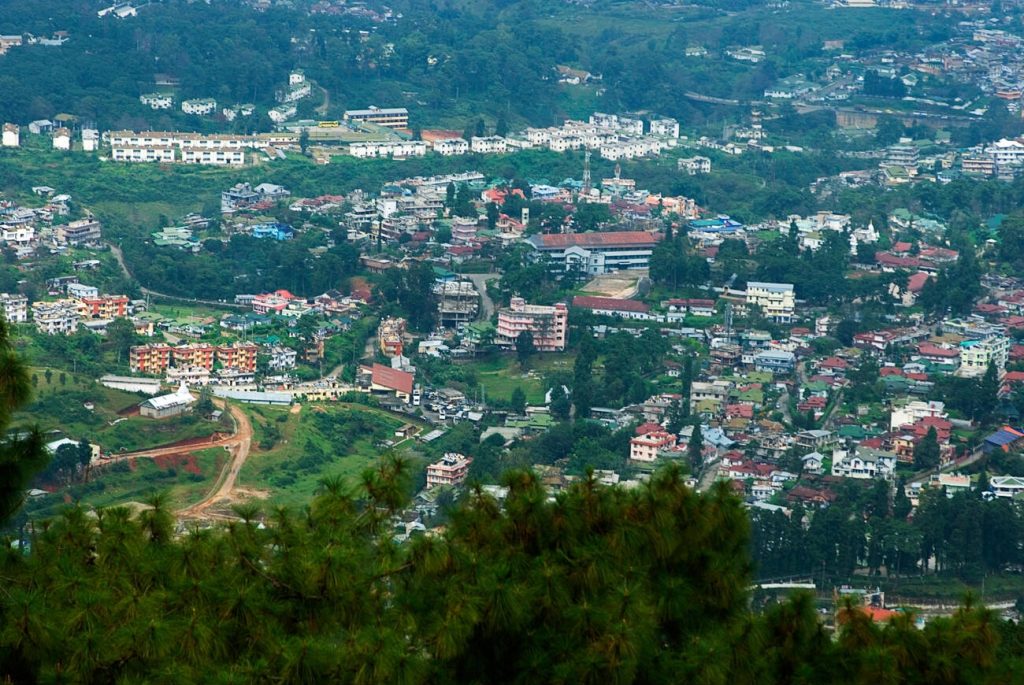
Shillong isn’t the stereotypical Indian capital. It feels comfortable and slow-paced, with a charming old-world charm and a youthful spirit, despite being bustling and congested. At Laitumkhrah, you may eat a lot of local Khasi street food, go shopping on a budget at Police Bazaar, and visit lovely cafes. The tranquil Umiam Lake and Umbrella Falls are a short drive from the city. Spend a day here getting to know the people and their way of life before continuing to other regions of Meghalaya via road.
NONGRIAT – CHERRAPUNJEE

If you’re willing for a bit of a hike, the trip to Nongriat village to view the Double decker living root bridge is an unforgettable Meghalaya adventure (read 3600 steps aka 2 hours each way)
If you’re up for a long journey on slushy, unmade, and often rocky terrain, check out Nongriat’s hidden gems, including the famed Rainbow Falls. Along the walk, there are numerous sapphire blue pools, unidentified waterfalls, and single-root bridges. Allow the forest to work its spell on you by surrendering yourself to it.
DAWKI – SHNONGPODENG – MAWLYNNONG VILLAGE

There isn’t much to do in Mawlynnong Village, but if seeing ‘Asia’s cleanest village’ appeals to you, stop by on your journey to Dawki from Cherrapunjee. Mawlynnong Village is one of many immaculate and sustainable communities in Meghalaya, with tree dwellings, a marketplace, and number of bamboo dustbins lining the road. Everyone in the village has a responsibility to maintain the village clean. Locals, even little children, are frequently seen cleaning the streets, picking up leaves, and tossing waste into the bin. Every nook and cranny of the community is adorned with bamboo waste bins. Cleaning isn’t a duty in this town; it’s a long-standing custom and a way of life.
The solitary living root bridge, a 10-15 minute walk from the car drop-off location and a fortuitous option for those who don’t have the time or energy for the Nongriat trek, is another top highlight.
Dawki, the Indo-Bangladesh border town, is a couple of hours away. A peaceful town is known for its beautifully pure river waters, which can be seen straight through to the very bottom of the river bed with the naked eye during certain times of the year! On the opposite side of a rickety flag post signalling the boundary, you can see Bangladesh on the other side of a tiny island by the river that acts as an open border.
OFFBEAT PLACES TO VISIT IN MEGHALAYA
Mawryngkhang
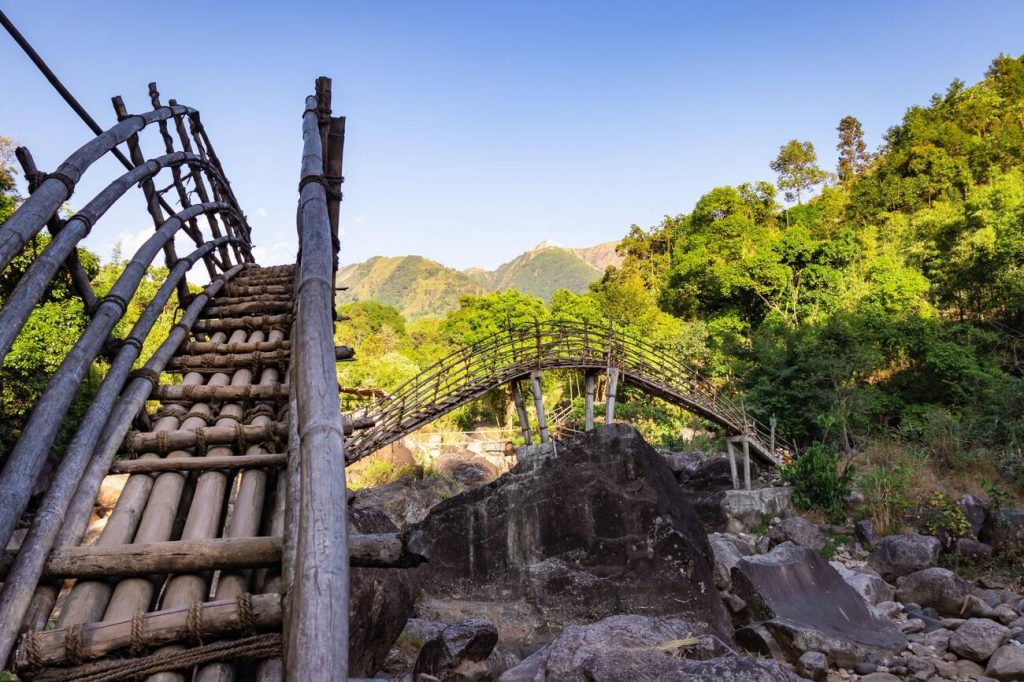
The beautiful Mawryngkhang Trek is regarded as one of Meghalaya’s most dangerous treks. It begins in a small hamlet in the East Khasi Hills and proceeds via a network of interconnecting bamboo bridges built by the locals across mountain ranges, broomstick farms, and raging rivers.
It is located in Wahkhen Village, and on the final stretch you can see the mythical King of Stones of Meghalaya, which is well-known for its folklore.
“King of Stones” was U Mawryngkhang’s moniker. He is claimed to have fallen in love with Kthiang, a princess from another realm. Mawpator, on the other hand, had fallen in love with her, resulting in a fight between the two. Mawryngkhang was harmed by Mawpator, but he returned the favour by hitting Mawpator with such power that Mawpator’s head fell off into the deep gorge below.
It is reported that the head of Mawpator may still be seen in the deep gorge from the summit viewpoint. The stones of Mawryngkhang and Kthiang, who stands behind him, can also be seen.
How to reach Wahkhen Village
There is no public transportation available to Wahkhen Village. There are a few shared taxis that travel through the area, although they only arrive later in the evening. Other options include hiring a scooter, which is frequently regarded as the best means of transportation, renting a private taxi, or scheduling a tour.
Where to stay at?
Unfortunately, there are no lodging alternatives in Wahkhen, the settlement nearest to Mawryngkhang. If you’re really lucky, the residents might let you stay at the village’s Music School for one night. Everyone else will have to return to Shillong or Cherrapunji to find a place to stay. As a result, it is critical to begin the walk early in the morning.
This trip can be accomplished in three to four hours from Wahkhen to Mawryngkhang and back. The amount of time it takes will, of course, be determined by your physical fitness and the number of pauses you decide to take.
The hike is not tough in the least. It’s all about keeping your feet balanced on the bamboo trail, which is pretty sturdy. If you are terrified of heights, though, you should avoid this walk. Because of a section that stretches for around 10 minutes straight at the edge of the cliff, this walk is known as Meghalaya’s scariest trek.
Even though the trek takes one to two hours and includes several thin bamboo bridges, the journey appears to be worthwhile once you reach the top. At the conclusion of the trail, you’ll find yourself standing on a 100-meter-tall rock with lovely dappled hues of green created by the light.
In fact, you may cool yourself in the natural pools that are located in the center of the trip.
Best time to visit
Winter is unquestionably the ideal season for a Mawryngkhang trip. Unlike during the rain, the trails will be dry and less slick. In addition, the weather will be cooler, making the walk more enjoyable. During the monsoons, the trail becomes slick and potentially dangerous. Regardless, you can enjoy the hike at any time of year.
Things to carry
Raincoats, a good pair of hiking shoes, and most importantly water bottles!
Khongthong Village
Kongthong, Meghalaya’s whistling hamlet, has been nominated for the ‘Best Tourism Village’ award, so some celebratory whistles are in order. Two other Indian villages have been nominated for the UNWTO (World Tourism Organization) awards. These are the Madhya Pradesh towns of Ladhpura Khas and Telangana’s Pochampally. The Ministry of Tourism recognized Kongthong village’s enormous popularity among tourists and announced the good news all over the world.
Locals in the village of Kongthong, 60 kilometers from Meghalaya’s capital city Shillong, refer to each other by musical melody identities rather than names. When a child is born, his or her parents compose a unique melody that forms a part of the child’s identity for the rest of his or her life. While they are given conventional names, the villagers’ favourite mode of communication remains the distinctive lullaby.
This ‘Jingrwai Lawbei’ tradition has been passed down through the generations among the local households. And there are two versions of these separate songs: a short song and a long song. The shorter version is usually sung at home as a pet name, while the lengthier version is based on woodland mythology and is believed to fend off evil spirits. These melodies can be heard in the woods.
In addition, if somebody is in trouble in the woods, the locals can be rescued by humming the melodies to identify themselves.
With lush foliage and breathtaking views, the Khongthong village is a sight to behold. On all sides, there are lush rainforests and meadows. The natives live in peace and harmony, and their main sources of income are farming and forest hunting. While the place’s beautiful beauty will captivate you, the calming melodies murmured by the residents distinguish it as one of the top tourist attractions in the globe.
The inhabitants’ musical culture is often used as a wooing rite. Every summer on a full moon night, the villagers have a joyous evening in which a young unmarried guy hums his song. The person who does it properly marries a rural single woman.
Best time to visit
The greatest time to visit this lovely area is between October and the end of May, when the weather is still decent. There is no better spot to visit if you want to learn about their distinct musical tradition!
Nongkhum Island
Nongkhnum Island is Meghalaya’s largest river island, largely hidden from the prying eyes of tourists.
The second-largest River Island in Asia. To get there, you’ll need to hire a cab and travel about 80 kilometers from Shillong. The stunning countryside vistas along the twisting road are worth admiring, albeit the road gets worse with stones and dirt beyond Nongstoin. Before arriving at Nongkhnum River Island, make sure you have enough food and drink. You may relax on the beach and take in the view of the blue water surrounded by hills, or you can go exploring the islands.
A walking track with long bushes and trees can be found. You may view the massive waterfall tumbling down if you take a ten to fifteen-minute walk through the jungle. The thunderous roar of the waterfall, with vapors forming all around it, is awe-inspiring. Nature has done its best to provide you with a lovely setting and a breathtaking view of the colorful countryside.
The area is populated by a small number of people, mostly from the Khasi tribe, who normally do not speak any languages other than their own. The breathtaking natural scenery is a visual treat, a spiritual delight, and unquestionably a photographer’s dream.
It can be difficult to plan a trip to Nongkhnum Island. You have two options: hire a taxi for the day from Shillong and return the same day after visiting Nongkhnum, or combine the Nongkhnum Island joy with Mawphanlur.
Best time to visit
Nongkhnum’s pure beauty can be experienced virtually all year, but the best time to visit is during the comparatively dry summer and fall months.
How to reach
You must first travel to Nongstoin in order to reach Nonghknum Island. From Shillong to Nongstoin, you can get shared sumo. After that, you must schedule a taxi to the island. If you do not want to spend the night there and plan to travel in a shared vehicle, leave Shillong early.
Things to do
Walk to the beach, take a boat ride to Nogkhum Island, and hike to weinia falls.
Mawphanlur
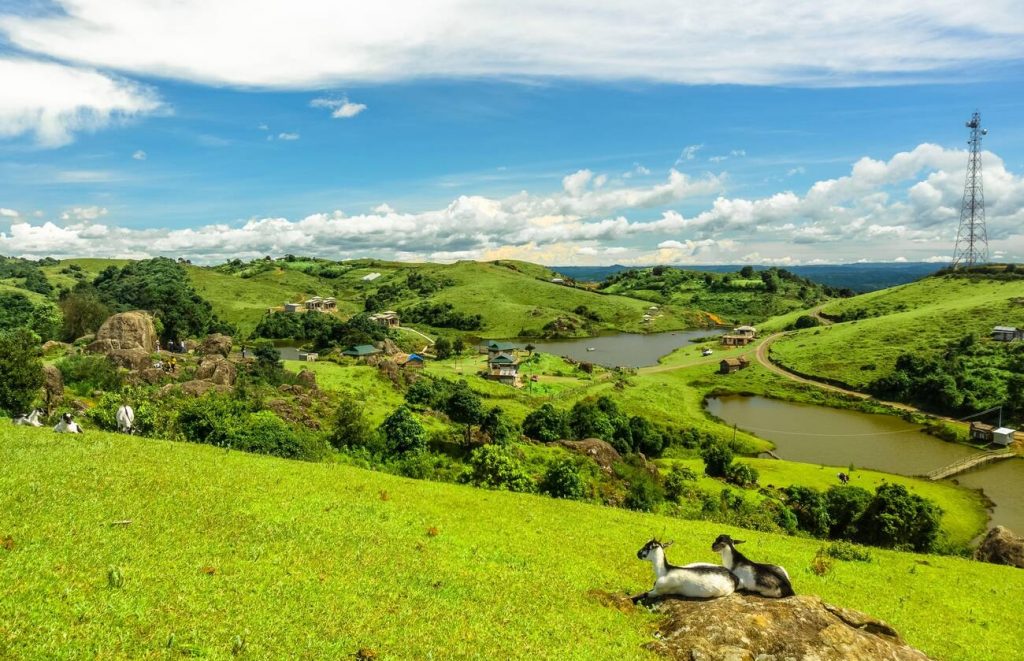
Mawphanlur is a scenic hamlet in Meghalaya’s West Khasi Hills, some 90 to 96 kilometers from the state capital Shillong. The countryside splendor is a sensory overload that discreetly enchants you. There is nothing but a miracle at the moment with a lush green hillside to stay on surrounded by beautiful ponds.
Mawphanlur is all about walking in a lush green environment. It will look to you that time has stopped there, where one can simply relax and enjoy the beauty of nature in a tranquil environment.
It’s right off the Shillong-Nongstoin-Tura Highway in Meghalaya’s Khasi Hills region. It’s in the West Khasi Hills district. The visible settlement of Markasa is the closest (about 70 km from Shillong). Mawphanlur is barely 5 kilometers from Markasa, which is located on the Shillong-Nongstoin-Tura Highway.
How to reach?
Guwahati is the closest railway station. You can get to Shillong from Guwahati via shared sumos and automobile, or you can book a private car.
The distance from Shillong to the location is around 95 kilometers. To get here, you can hire a car in Shillong. Local jeeps are available in Shillong’s Lewduh. However, such vehicles are in short supply. You can also take a shared cab from Shillong to Nongstoin and get off at Markasa village. To get to Mawphanlur from Markasa, you’ll need to hire a private vehicle.
Best time to visit
You are welcome to visit the location at any time of the year. It is impossible to anticipate the weather in Meghalaya. However, the months of October through April usually have the clearest skies and the nicest weather. If you wish to visit the key places in Meghalaya, arrange a week-long itinerary.
Things to do
Hiking, fishing, kayaking, boating, and star gazing.
Phe Phe Waterfall
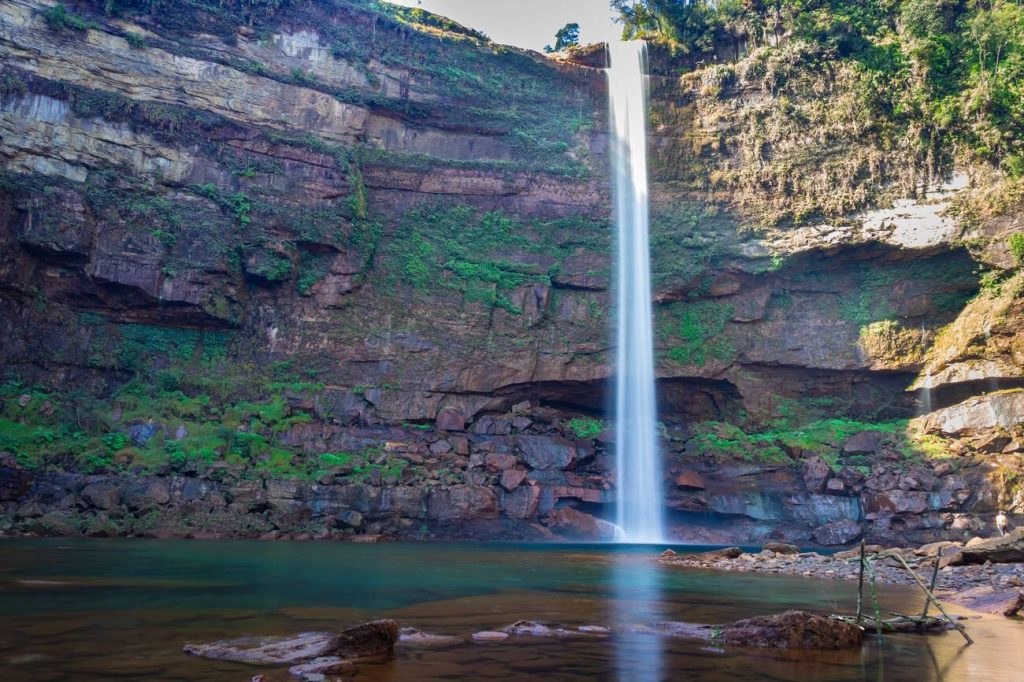
The waterfall Phe Phe is two-tiered. Phe Phe is a Jaintia word that means “paradise” in English. The waterfall’s placement adds to the excitement. We entered the land of paradise after descending a steep hill, passing through the shrub bamboo plants, seeing the waterfall in the backdrop of the blue sky, and seeing the range of hills mixed with light and shadow on the other side. The waterfall is unique in its beauty and spirit. The water is as clear as the sky, as blue as the sky, and extremely cold.
It is an absolute pleasure to dive into these waters and rejuvenate ourselves. The sensation of a sprinkling of water from the fall on the skin creates a strange type of tranquility with feet immersed in these freezing waters and eyes closed.
How to reach?
On the road to Krangsuri Falls, the beautiful Phe Phe waterfall is located 20 kilometres from Jowai. And getting to the fall isn’t tough. You may get to the fall by taking sumo to Jowai from any of Shillong’s taxi stations. After arriving in Jowai, you can hire a car or a taxi to take you to Phe Phe Falls. The waterfall is right on the road between Jowai and Dawki. You have to cross the river by boat and walk for about 30 minutes to reach it.
Where to stay?
Near the stunning and glittering Phe Phe Falls, there is adventurous camping where you can simply stay and enjoy nature at the same time. Here, you may live out your childhood dreams of sleeping under the stars, having fun over a campfire, and relaxing in the great outdoors.
Best time to visit
The greatest time to visit Phe Phe is at 5 a.m., when the flock of birds, sunrise, and Phe Phe falls all come together to form a heavenly and magical scene. But this is not at all necessary, you can visit it anytime of the day. Season-wise, the winter months from October to April are the best time to see this gorgeous fall cascading from the cliff.
Things to do
Kayaking, swimming, and hiking to the Phe Phe waterfalls are just a few of the activities available. A refreshing bonfire beside the river under a starry sky.
Laitlum
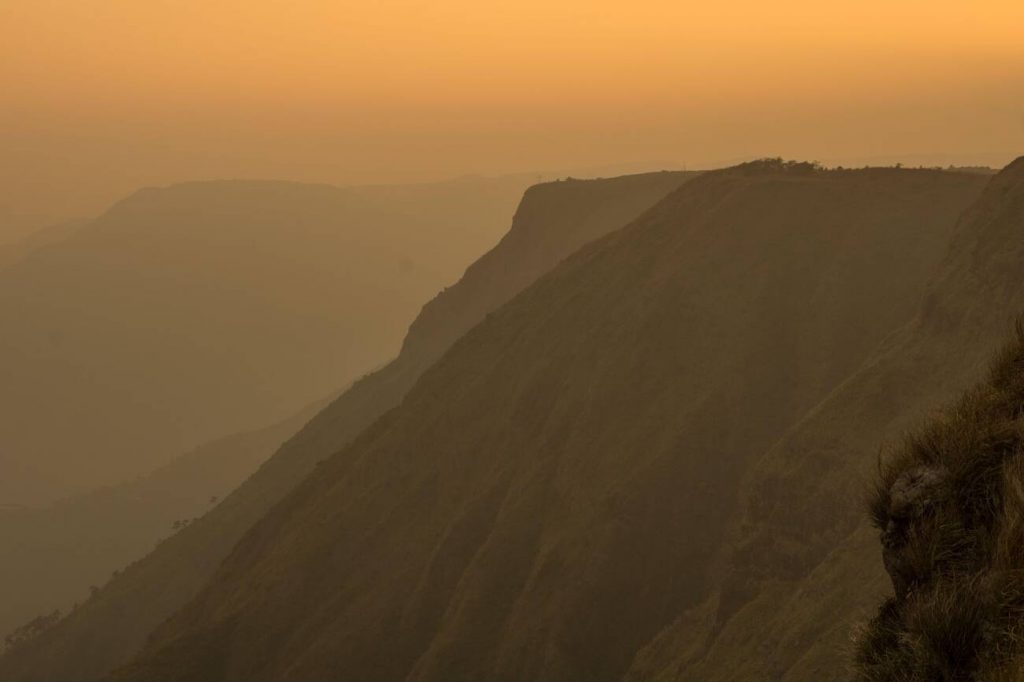
Laitlum is a lesser-known wonder in India’s East Khasi Hills, near Shillong. At the steep end of the plane land, the lush green Laitlum Canyon perspective appears. Often, black clouds will joyfully rest on the mountaintop, providing you with a spectacular view. However, after the flying clouds have vanished and the shining sun has fallen on the noticeable curves, you must feel more than a dreamland.
Shillong’s Laitlum Canyon is reminiscent of the Scottish Highlands. Laitlum Canyon, popularly known as the “Sit Valley,” is an hour’s journey from Shillong along the Mizoram route. Laitlum Canyons lives up to its name, which means “end of the hills.” The number of people visiting this wonderful location is rather limited, but the natural beauty of the area has remained untouched.
Best time to visit
The Best time to visit Laitlum Canyon, Shillong is before 5 pm. Season-wise, it is accessible all throughout the year. Only during monsoon, it will be entirely covered with clouds making it difficult to see the rolling hills and landscape further.
How to reach
The distance between the canyons and Shillong is 23 kilometres. You have to take a taxi from shillong to laitlum if you don’t have your own car. If you’re traveling from Cherrapunji to Shillong, avoid NH 206 and instead take the road that passes via Smit Village (this is a longer picturesque road).
Things to do
The canyons are usually enveloped in fog, which adds to their ethereal beauty. It’s also a great place for a lengthy hike or a quick 2 km mini-trip, and you can trek the journey while admiring the scenery.
Welcome to Meghalaya
Check out the package today

Why you should visit Meghalaya? Meghalaya Trip is famed for its roaring high waterfalls and dense forests. Its name literally means…
Mawphlang Sacred Forest

The Mawphlang Sacred Forest is one of Meghalaya’s most unusual sights, which most tourists overlook owing to a lack of knowledge.
Mawphlang is a tiny village in Meghalaya state’s East Khasi Hills district. Mawphlang’s primary attraction is located 27 kilometres from Shillong on the way to Cherrapunji. Cherrapunji, on the other hand, is around 47 kilometres away from Mawphlang.
The sacred forest is 11 kilometres from the Shillong-Cherrapunji main route. When you enter the forest, you’ll notice an amazing network of plants and trees that are all intertwined. Some of them, which are said to be over 1,000 years old, are brimming with ancient knowledge. Many medicinal plants, including those that claimed to heal cancer and tuberculosis, as well as Rudraksha trees, are available (the seeds of which are used in religious ceremonies). Orchids, insect-eating pitcher plants, ferns, and mushrooms flourish as well. The forest’s incredible biodiversity isn’t the only thing that makes it so precious. The jungle is home to a deity known as labasa, according to indigenous tribal beliefs. It defends the community by taking the form of a tiger or leopard. Nothing may be taken from the forest for fear of upsetting the deity. There have been reports of persons who have defied this taboo becoming ill and even dying as a result of their actions.
How to reach
Shillong is 27 kilometres away from Mawphlang. To visit Mawphlang, it is, therefore, preferable to rent a car from Shillong. The road is in excellent condition, and it takes slightly more than an hour to drive from Shillong to Mawphlang without stopping.
It is recommended stopping by Mawphlang holy forest while on the journey to Cherrapunji from Shillong,
On a sunny day, people usually spend at least 2 hours in the Mawphlang valley after arriving. It’s a pleasant location to unwind. As a result, we recommend that you make the necessary preparations.
Best time
The greatest time to visit Mawphlang is at any time of year. The state of Meghalaya is known for its wet climate. As a result, keep in mind that rain can derail your tour at any point. There is, however, nothing to lose because many people come to Meghalaya to enjoy the lush flora and rain.
However, the optimum time to visit Meghalaya and Mawphlang is from late September to mid-May, with November to April being the most pleasant season.
Where to stay?
Shillong is the only closed location from where you may easily enter Mawphlang Sacred Forest. So, it is recommended to rest the night prior in Shillong.
Alternatively, you might stay at Cherrapunji, which is a little further away. You can, however, schedule a trip to Mawaphlang on your way back from Cherrapunji to Shillong.
Shympe falls
East Jaintia hills are home to Khaddum-Shympe Falls. It is nestled in the hills of Saipung town and is only recently becoming well-known among the state’s residents. The location has a lot to offer, including not only a magnificent number of waterfall strips but also a magical cave where you may swim.
Best time to visit
The best time to visit here is in the winter months starting from October to March.
Things to do
You can enjoy cave diving here along with cliff jumping (only if you can swim), and swimming.
David Scoot Trail
Trekking one of Meghalaya’s oldest trekking routes, which has been in existence since colonial India, seems adventurous and historical. David Scott, a British officer, is the trail’s name. It is a U-shaped cart route discovered by David Scott in the 1800s that was used to transport products on carts and mules from Assam to Bangladesh. It is stretched out over 100 kilometres, but the trekking path is a 16-kilometer hike from Mawphlang to Lad Mawphlang.
It’s a short and simple hike that takes about 4-5 hours to accomplish. Hikers will find that the trail route is surrounded by idyllic views and pastoral settings that will satisfy their wanderlust. The trail is lined with expansive vegetation, tumbling waterfalls, and crystal clear water streams, natural ponds amidst scanty forests, colonial-era medieval bridges, and lonely Khasi villages. The climb provides a panoramic perspective of the rambunctious Umiam valley and river.
The David Scott Trail can be completed without the use of a guide, but there are several confusing twists and turns that may leave you stranded in the woods until you figure out where you are. On the hiking trail, there are very few people unless everyone is in the same mindset as you to go up David Scott Trail on the same day. As a result, it is strongly advised that you have a guide along so that you may enjoy the trip without getting lost.
The place is covered with Khasi people who are definitely so hard working and their humanity has no language.
The David Scott Trail comes to an end in Lad Mawphlang, and the only issue is a lack of public transportation to Cherrapunjee or Shillong. The walk ends on a main road close to Cherrapunjee, therefore it is possible to combine the David Scott Trek with a trip to Cherrapunjee. There are vehicles, but they are few and far between, so you may have to wait a bit for a public or shared vehicle. You may also get out of your comfort zone and hitchhike to your destination. It’s an amazing area to visit, with weird natural trails. It is a must-see for anyone who enjoys nature, walks, and seeking full tranquility while walking along an outdated rustic path.
Best time to visit
The winter months are preferred mostly for visiting this place.
How to reach
Guwahati is the nearest Railway Station or Airport for reaching Shillong. There are shared cabs available from Railway Station that ply daily for Shillong.
The next destination is Mawphlang, which is around 20 kilometres from Shillong. There are few shared vehicles available, but you can rent a cab to take you there.
Mawlyngbna
Have you heard about Mawlyngbna, a lovely village in Meghalaya near the Indo-Bangladesh border? If not, conduct a search, go to the location, and gain an empowering experience.
On your way, Mawlyngbna will greet you with a waterfall by the roadside. You will be mesmerized to get stopped again, to watch the flight of the clouds play with the sun.
Mawlyngbna is Meghalaya’s adventure center. This location has 200 million-year-old fossils! Locals say the area was formerly under the seabed (we are not sure how the sea was present at this location), and Mawlyngbna offers a variety of activities. There are several short treks that will take you to stunning waterfalls or the fossil park, where you may explore the fossils. You can go to the pitcher plant farm and drink the nectar directly from the plant. The Um-kha-koi reservoir is a good place to start. Kayaking, angling, and cliff leaping are all available here. At Mawlyngbna, you can be yourself.
How to reach
To get here, you can hire a car in Shillong. In terms of local transportation, Shillong does not have any direct local vehicles. You can arrive at Mawphlang and then rent a car to get to Mawlyngbna.
Best time to visit
The month from October till March is suggested as perfect for visiting this place.
Where to stay
The night can be spent in “The House in the Woods.” Mawlyngbna Traveller’s Nest Campsite has two cottages that are surrounded by trees. The crickets will be greeting you with their whistles as we climbed the stairwell. A lovely night with a full moon, bonfire, joyful songs, and the melody of our guest’s guitar strings can be witnessed there.
Lalong Park
Ialong Park is an eco-park located at Ialong village near Jowai in the West Jaintia Hills district of Meghalaya, around 7 kilometres from Jowai Bus Stand. It is one of the most beautiful sites to visit in Meghalaya and one of the most popular spots to visit in Jowai, located on the Jowai-Silchar route.
Ialong Park is well-known for its sacred woods and a lookout with panoramic views of Pynthorwah Valley. The park is continually being refurbished and beautified as part of the District Administration’s Special DRDA Tourism Project. Water dams, bathrooms, canals, changing rooms, and other amenities are available. The park is adorned with a variety of flowers, some of which are local to Meghalaya. The park’s stunning sunset may be enjoyed by sitting on the grassy hills.
Best time to visit
It is preferred during the last September till April to visit this place.
How to reach
The Distance from Jowai Bus Stand is 7 Km and the trip Duration (Including Travel) is around 1-2 Hours. The place Location is at Ialong Village and transportation options include Cab.
FAQ
-
Which is the best time to travel to Meghalaya?
The climate of Meghalaya is tropical. The winter months, from October to March, are the greatest time to visit. However, if you want to experience the waterfalls in their full grandeur, go between August and the beginning of October, which is the end of the rainy season.
-
Is Meghalaya safe for a female traveler?
Yes, Meghalaya is extremely safe for Female Travelers. Meghalaya is India’s only Matrilineal State where everything is handled by women. Therefore, it can’t be unsafe for females
-
What makes Meghalaya unique?
The most number of waterfalls are spotted in Meghalaya and there are a lot more yet to be discovered. Also, the longest limestone cave in the world is found here and along with this, there is a huge number of other caves discovered in the state. Moreover, the naturally built living root bridges drive people to this state. All the heavenly features make Meghalaya unique and beautiful.



